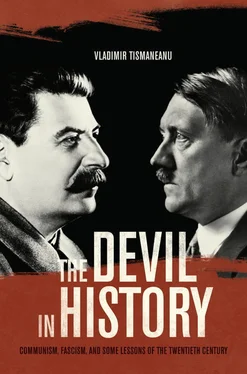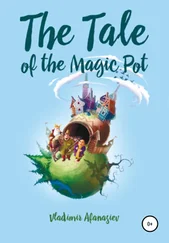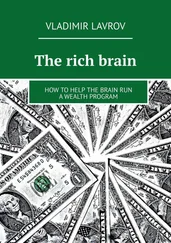I argue that only the reinvention of politics operated by the dissident movement could offer the possibility of achieving genuine democracy and full liberty in Eastern Europe and the Soviet Union. The proposed analysis represents a revisiting and development of my theses on the role of ideological disillusionment in the ultimate decline (deradicalization) of Leninist regimes as formulated in the 1980s and early 1990s. 6
Several generations have come of political age in Eastern Europe and the Soviet Union by assimilating a radical promise of universal redemption, genuine equality, and emancipation. The civilization built and exported by the Bolsheviks had a totalizing ambition encompassing all spheres of life. In the early 1980s, exiled dissident writer Andrei Sinyavsky argued that this alternative illiberal modernity was “a durable, stable… structure,… [which] arouses the interest and attention of the world as, perhaps, the most unusual and awe-inspiring [groznoe] phenomenon of the twentieth century. It is awe-inspiring because it makes claims to the future of all mankind and… considers itself as an ideal and as the logical conclusion of the development of world history.” 7This construct of Leninism was first and foremost erected on faith. Emancipation from such radically transformative conviction became an odyssey synonymous with the history of Communism. As one Soviet philosopher put it, “I resisted long and fiercely, until I had to surrender before… life itself [my emphasis].” 8
Marxism in its Leninist avatar was imposed as the philosophy par excellence, the unique scientific worldview, the spiritual complement of the technological-industrial evolution of the society. It jealously guided, inspired, and motivated the political-intellectual development of East European societies. It regulated their main political, philosophical, ethical, and aesthetic corpus of hypotheses, theses, values, norms, and opinions. Moreover, under the specific circumstances of the Stalinist period, Marxism was converted into dialectical materialism (Diamat) , a simulacrum of dialectical jargon combined with pseudoscientific claims. The latter was gradually instituted into a monopolistic orthodoxy imagined according to the requirements of self-sufficient, noncontradictory, and a priori infallible religious dogmas. Conceived as such, it brought about a continual stiffening of spiritual life in Eastern European countries, as well as a normal, absolutely logical counterreaction of refusal and dissatisfaction with the prevalent ideas.
The Stalinist functionalist-pragmatic Weltanschauung succeeded in emphasizing as altogether certain and genuinely axiomatic a number of theses from Karl Marx’s early writing, The German Ideology (such as economic determinism and the assumption that the dominant ideas within a social organization are the ideas of the hegemonic group). It also took on several naive materialist positions defended and promoted by Lenin in Materialism and Empiriocriticism , above all Lenin’s vulgar representation of the philosophical parties. Under Stalin, dialectics suffered a strange metamorphosis, a process of refunctionalization , the result of which was its transformation into a mere ideological weapon, a mythological instrument supporting each political step of the regime, each tactical turning. Robert C. Tucker, in his attempt to understand Stalin’s urge to master the supposedly objective laws of socioeconomic development, pointed to his adoption of “a legislative attitude toward reality…. [W]hat he referred to as ‘objective scientific laws’ were an externalization of his inner policy dictates; they were a projection upon Soviet history of the formulas for socio-economic development generated in his own mind. His own ideas appeared to him as natural necessities governing the development of society [original emphasis].” 9
Stalin’s projection of his own ideas as natural law was, however, the result of the structural challenges of utopia in power (adoption, fulfillment of ideals, and adaptation to the world). To follow Klaus-Georg Riegel, under Stalin Soviet rule became the “hierocratic domination of the church-dispensed grace.” In the physical absence of Lenin, the numinous leader incarnating the absolute power of the party, “the imagined community of Leninist disciples” 10had to reinvent itself by founding its charisma in the scriptures of the founding fathers. The invented tradition of Marxism-Leninism was then thrust upon the party ranks as a means of purification or, rather, to stabilize the unquestionable normative identity of the party. However, Stalin’s obsession with strengthening the party was not far from Lenin’s dictum that “a party becomes stronger by purging itself.” 11Indeed, to prevent diffuseness of dogma and weakness among the cadre, Stalin pronounced that “the more drastic the purge, the more likelihood is there of a strong and influential Party arising.” 12
The climax of this mode of operation, its most glaring and outrageous consequence, involved the “dialectical confessions” during the Stalinist show trials, those abject self-flagellations meant to give the totalitarian political order moral legitimacy: if all opponents (real or invented) were nothing but scoundrels, loathsome agents of the West, despicable traitors, and infamous saboteurs, then the Stalinist leadership, benefiting from a perfect political purity, was entitled to invoke the alibi of an “objective” historical rationality. 13These “poetics of purge” regulated ideological space within the body social and politics of the Soviet-type polity, redefining the “elect” within the community and reemphasizing their messianic role. Accordingly, the sacred history of the movement was heroically rewritten by blood and exclusion. Conceived by its founding fathers as an antistatist philosophy, Marxism culminated in the Soviet apotheosis of the party and state machine (partolatry and statolatry). The legitimacy of the Bolshevik elite derived primarily from its relationship to Marxist doctrine. Arcane as they sounded to external observers, the squabbles of the 1920s touched on the most sensitive points of what Czesław Miłosz has called the New Faith, an ideology “based on the principle that good and evil are definable solely in terms of service or harm to the interests of the Revolution.” 14The revolution was hyperbolized as a cathartic event, the advent of a new age of social justice. Marxism’s claims of scientific infallibility were added into the mix. The result was a gnostic vision that explained history and society in almost geometric formulas whose deep secrets were accessible only to a select group of ideological guardians. All these factors revealed the process of intellectuals being seduced by allegedly ironclad determinism in an age of political extremes. In other words, to quote from a highly influential book of the 1930s, The ABC of Communism , “what Marx prophesized is being fulfilled under our very eyes.” 15
The social promises and regenerative spirit of Bolshevism were invoked as arguments against those who deplored violence by dictatorial power. Many intellectuals, including some famous names like Maxim Gorky, André Gide, Arthur Koestler, Manès Sperber, Romain Rolland, André Malraux, and Ignazio Silone, were fascinated by what seemed to be a heroic historical adventure. The Bolshevik revolution was, to use the words crafted by the socialist politician Jean Jaurès for the French one, “a monstrous cannon, which had to be maneuvered on its carriage with confidence, swiftness and decisiveness.” 16Moreover, the Soviet Union was, for them, clearly a model for ideas and institutions, the source of a new socialist ethos, of a novel humanism, at the time when liberal, representative democracy was perceived as having failed to rise to the challenges posed by modern societies. Some of them grew disappointed with the cynicism of the Communist commissars and left the Leninist chapels; others, like Pablo Neruda and Louis Aragon, refused to abjure their faith and remained attached to hackneyed Communist tenets. Moreover, upon the Sovietization of Eastern Europe, Leninism became an alternative for national rebirth. For example, Communist doctrinaire Václav Kopecký argued in January 1948 that “the ideology of the new Czechoslovakia will be the ideology of the new People’s Democratic Republic and the ideology of transition on the road from capitalism to socialism.” 17Many such examples can be found in the newspapers of those years in each of the countries in the region. 18The Communist “moral elite” claimed an exclusive mandate of salvation and historical truth in fulfilling its world mission. 19Or, in the words of Jean-Paul Sartre in 1961, “Nothing is clearer; whatever its crimes, the USSR has over the bourgeois democracies this redoubtable privilege: the revolutionary objective…. [The Soviet Union was] incomparable with other nations; it is only possible to judge it if one accepts its cause and in the name of that cause.” 20
Читать дальше












